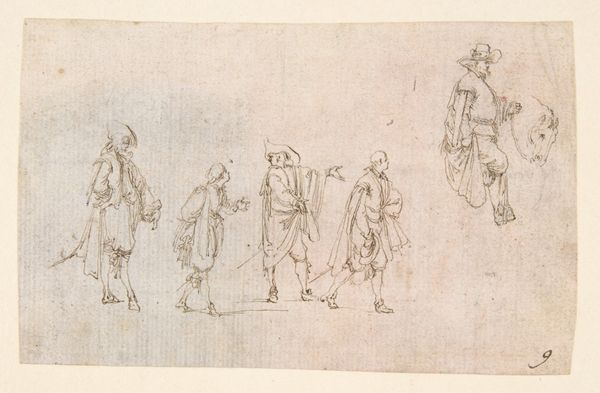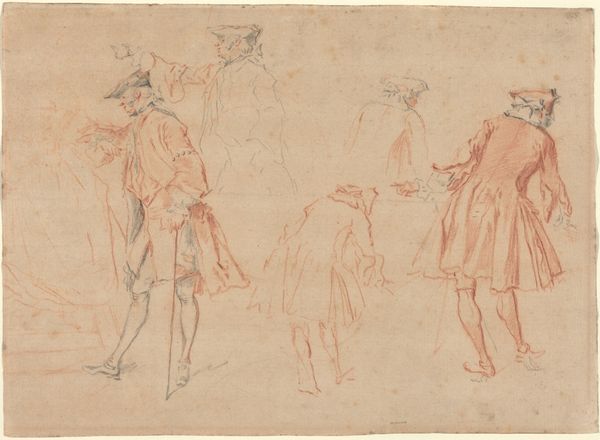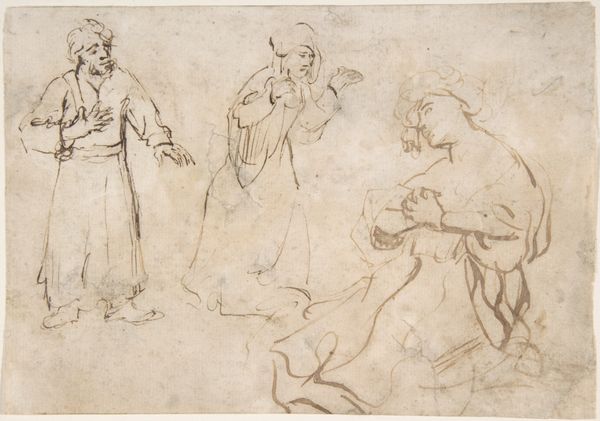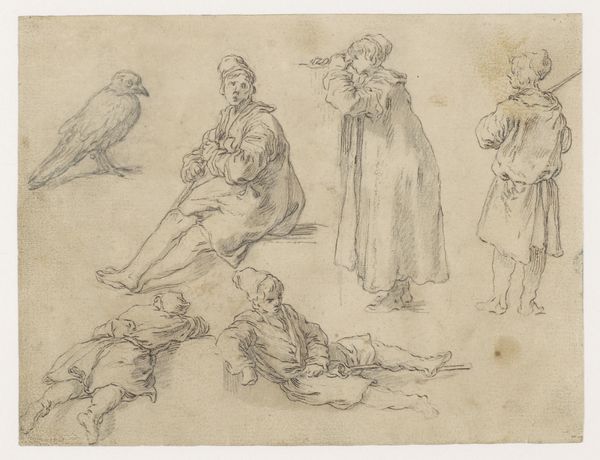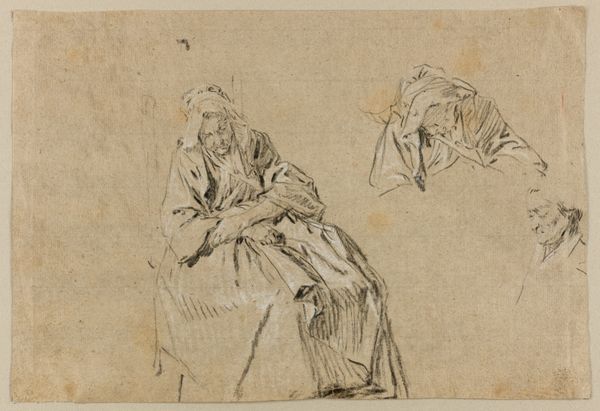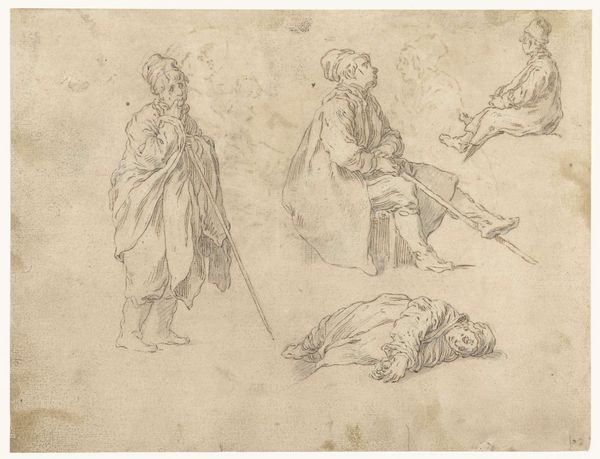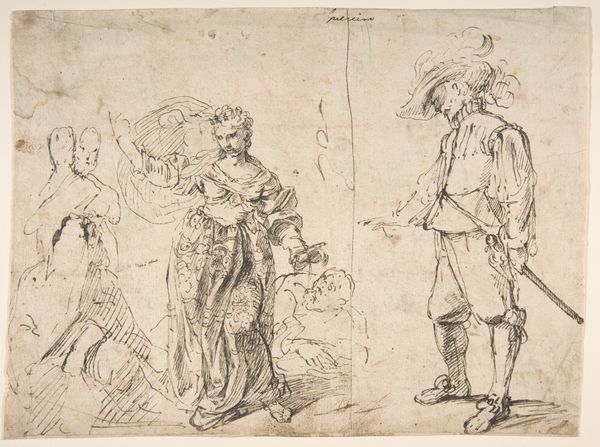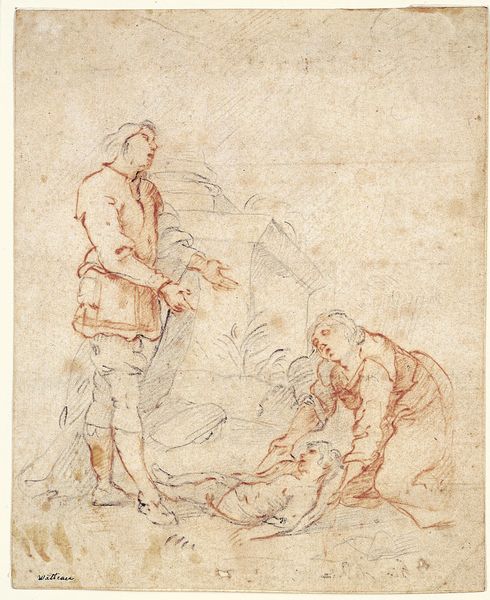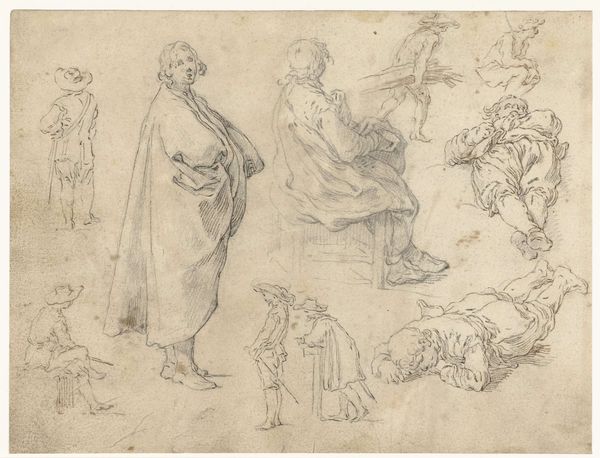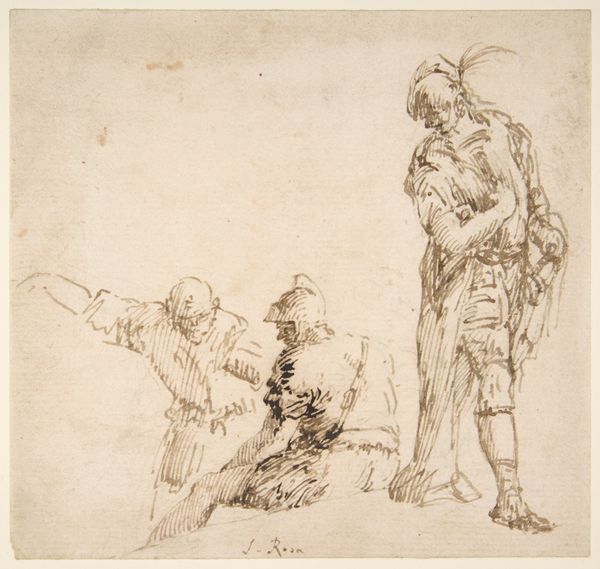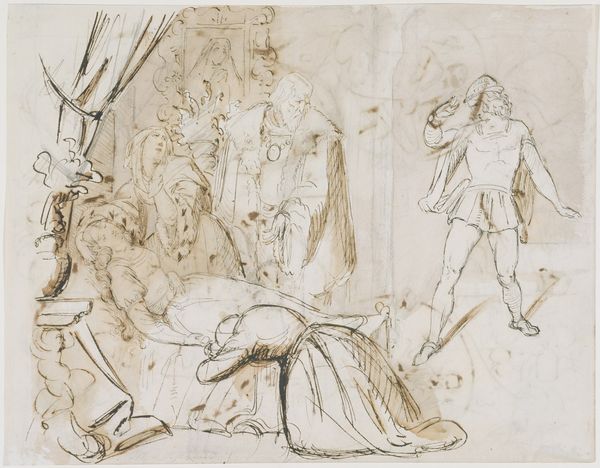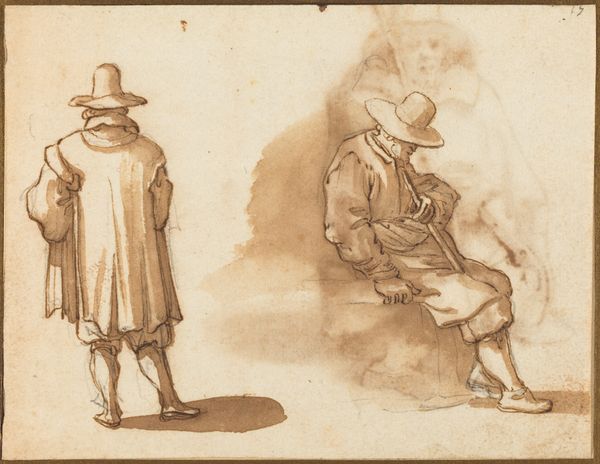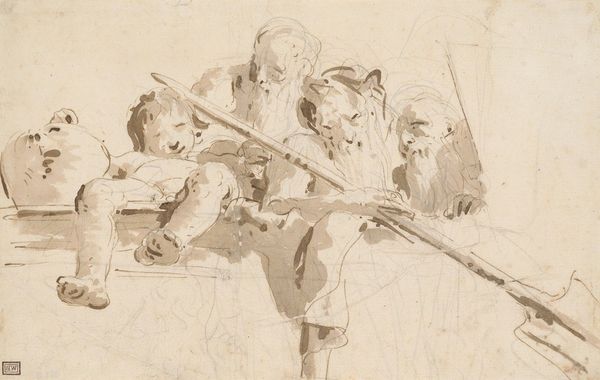
drawing, print, paper, chalk
#
portrait
#
drawing
#
baroque
# print
#
pencil sketch
#
figuration
#
paper
#
chalk
#
history-painting
#
academic-art
Dimensions: 166 × 202 mm
Copyright: Public Domain
Curator: Jean-Antoine Watteau's "Three Studies of a Gentleman," dating from 1710-1711, is currently housed at the Art Institute of Chicago. What are your initial thoughts? Editor: It’s a flurry of red chalk. My eye immediately jumps to the variations in line weight, suggesting a kind of urgent exploration of form and texture of the clothing of this gentleman. You can practically feel Watteau experimenting. Curator: Indeed. It is quite compelling how Watteau dissects aspects of gendered performance. We see not a singular depiction, but fragmented poses indicative of the aristocratic male. It speaks volumes about Baroque societal roles and expectations, doesn't it? Editor: Absolutely, especially when we consider the paper and the red chalk—relatively accessible materials, indicating this probably wasn't a commission but perhaps an exercise. The labor of observing, sketching, iterating… the materials give insight into artistic process of figuring out how to present status through clothing of the era. Curator: I'm also interested in considering it as an extension of theatrical representation. Watteau designed costumes for the Opéra-Comique. What can the language of dress tell us about the societal constructs? Editor: That’s a great point. Thinking about production, this drawing serves as a means to an end: preparation for something grander, more staged, but its inherent material quality becomes quite alluring as this object here, especially as a stand alone piece to inspect its inherent qualities of a quickly rendered moment. Curator: These drawings invite a reflection on power. Who are they for? What social currency did these studies afford Watteau within the convoluted Parisian art world? These visual dynamics shape our understanding. Editor: Agreed, and in the swift, repetitive lines we feel that social context and material interaction in play. It makes one consider, with this emphasis on repeated sketching, how can the creation and intention of an artwork, which is a task in and of itself, exist as more than its finished output, yet take on its own characteristics? Curator: By interrogating these contexts, we open up fresh avenues of interpretation and see this artwork's resonating relevance. Editor: Indeed. A closer inspection into these material investigations of artistry only adds a deeper level of respect and introspection.
Comments
No comments
Be the first to comment and join the conversation on the ultimate creative platform.
